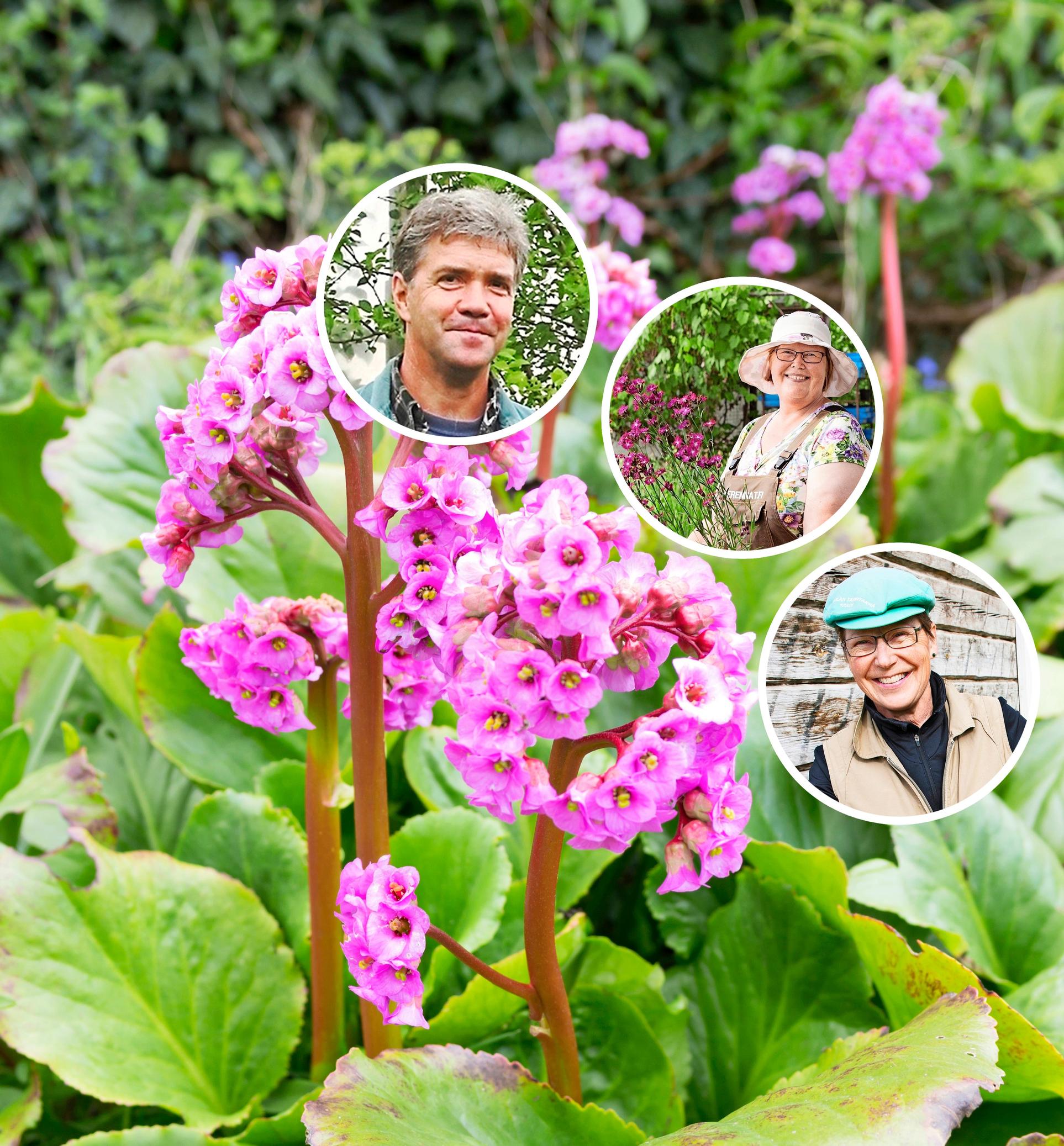
Looking for a perennial for that tricky spot in your garden? Nursery growers share 9 resilient troopers
A shady, dry corner, a tree root zone, or a harsh open ditch doesn’t have to be an eyesore in your yard. Three nursery pros share their favorite perennials to help any trouble spot flourish.
Axel Kroschel: “Red barrenwort tolerates drought remarkably well”
Tornionlaakso Nursery, Tornio, zone VI


1. Barren strawberry

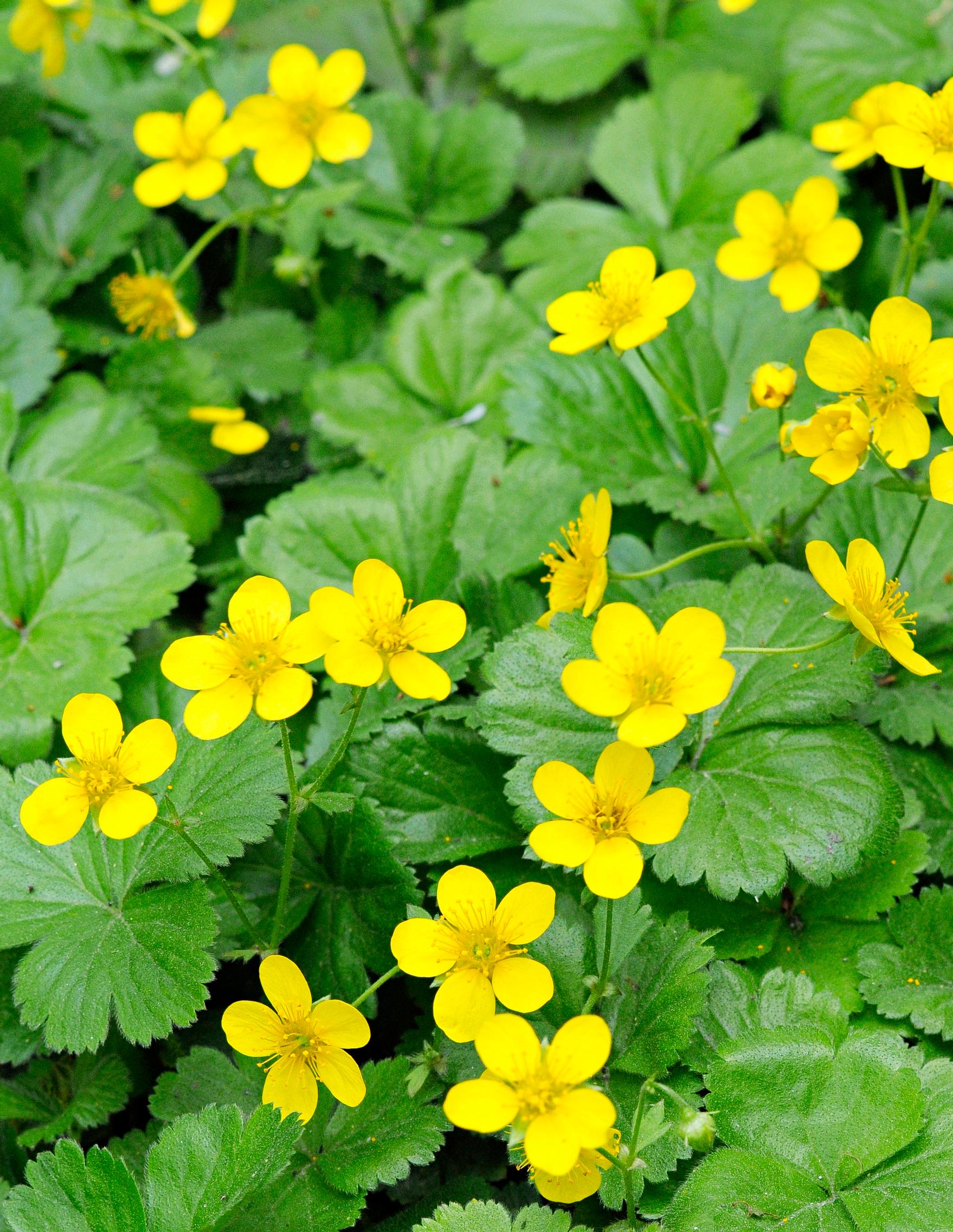
Barren strawberry forms a soft, green carpet that’s easy on the eyes. It’s worth planting over a large area if you have the space. Along with its underground runners, Waldsteinia ternata also sends out fun aboveground runners. Plant 8–12 seedlings per square meter, and it will quickly blanket the ground with its strawberry-like leaves, leaving no room for weeds to sneak in. In addition to its evergreen foliage, you get bright yellow flowers that look charming in the shade.
Barren strawberry thrives in very dry spots and needs minimal watering. Even here in Northern Finland, it comes through winter undamaged. We’ve grown it at our nursery for around twenty years and have never encountered any diseases or pests.
Light requirement: sun to partial shade
Height: 10–15 cm
Bloom time: June
2. Red barrenwort

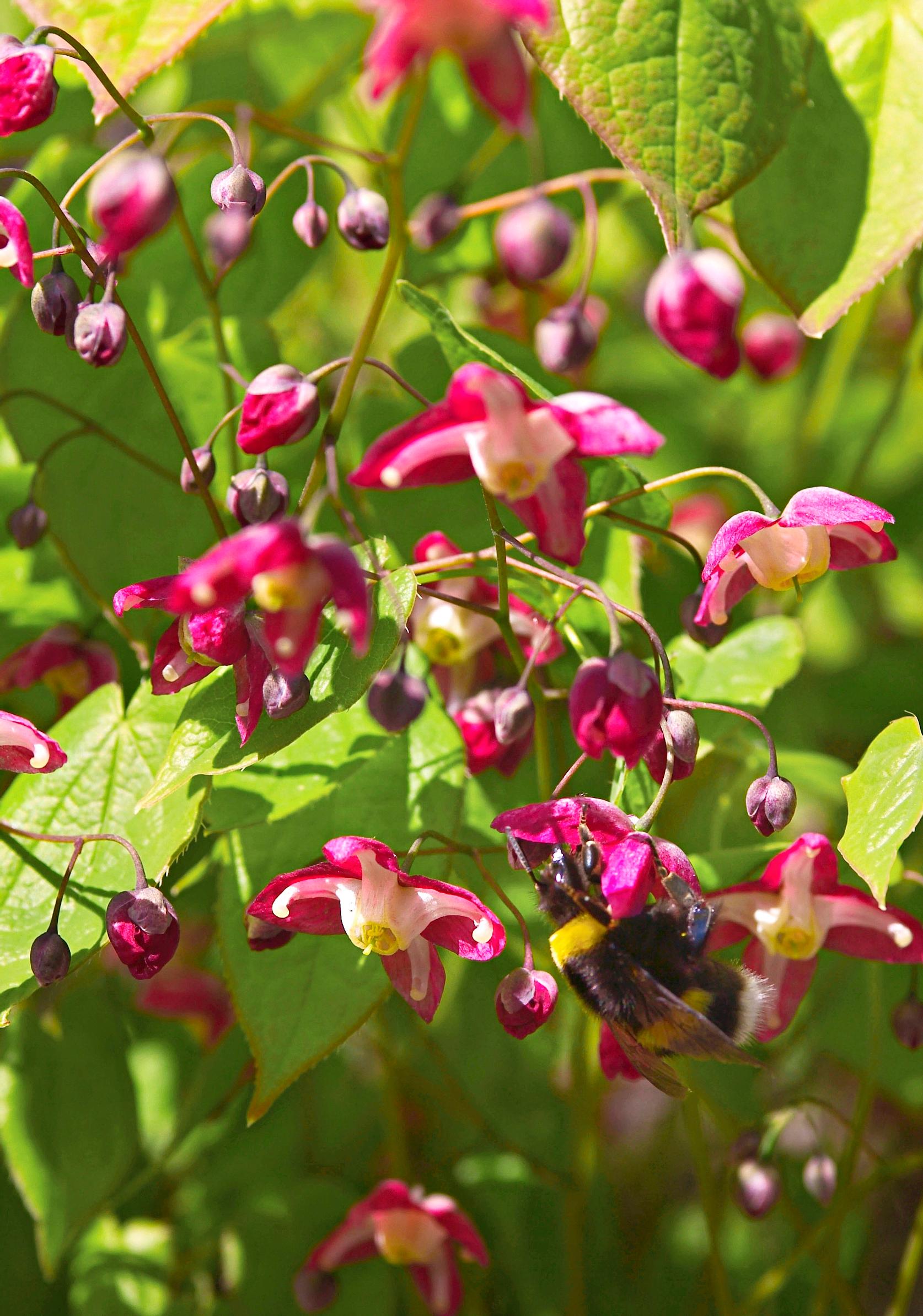
A dry, shady area can be challenging, but red barrenwort appears in almost every gardening book—and for good reason. It tolerates drought remarkably well. I have one growing among dense birch roots, but it’s doing just fine there. Epimedium x rubrum has lovely reddish leaves, but the flowers are even more stunning. They’re so delicate you often only notice them if you crouch down for a closer look.
This petite perennial is my favorite for dry, shady spots simply because it’s so beautiful. Red barrenwort blooms early, even up north, beginning in early June. There aren’t many pitfalls—just avoid using too much fertilizer, which can lead to overly delicate new growth that may not mature in time.
Light requirement: partial shade to shade
Height: 20 cm
Bloom time: May–June
3. Geranium x cantabrigiense

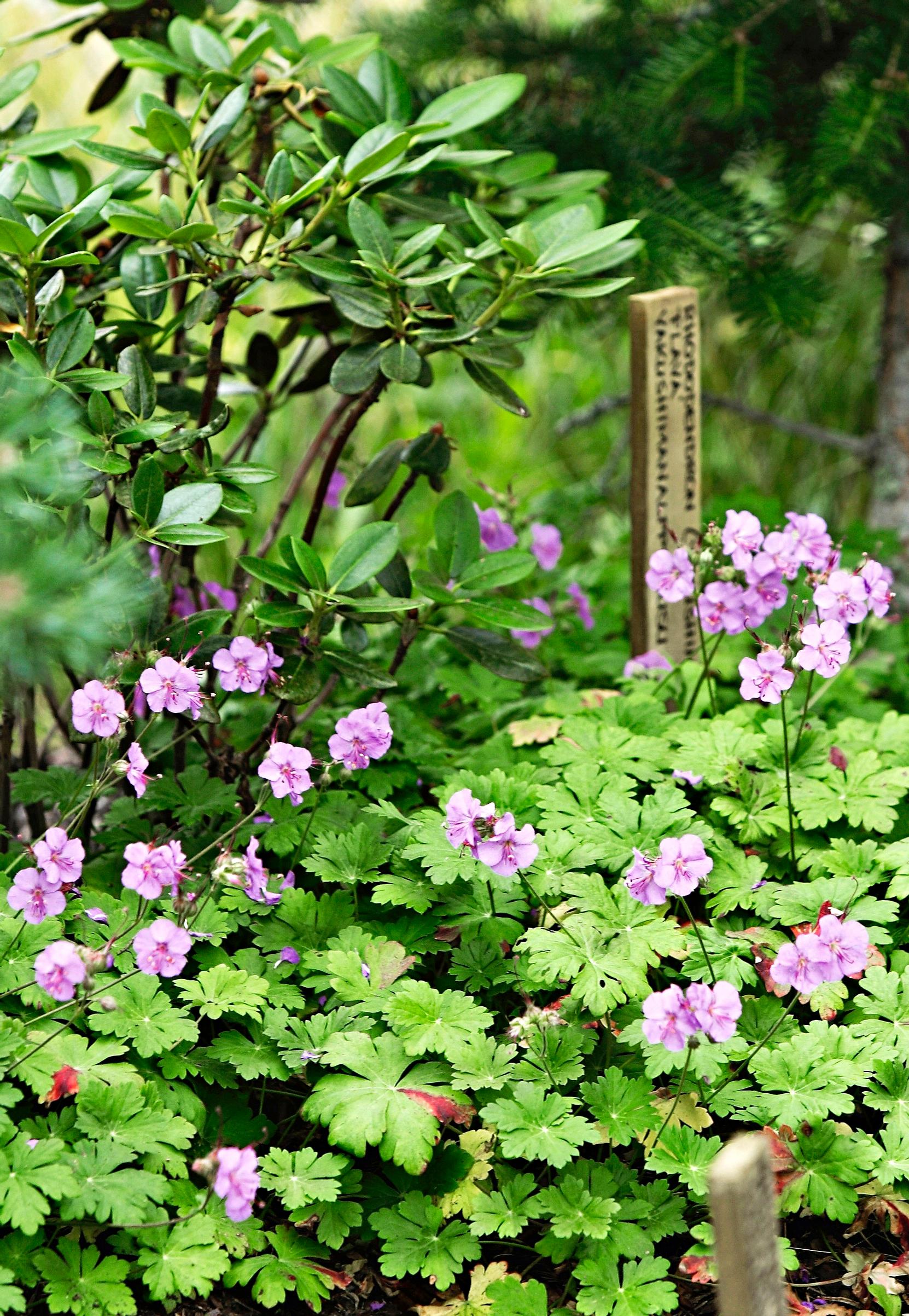
Geranium x cantabrigiense is especially useful for tight spots in the yard or anywhere that offers few other options. Dry, shady locations vary, whether they’re under old shrubs or trees, or along an east-facing wall that never gets rain. Geranium x cantabrigiense adapts well to different environments and needs very little care. It can thrive among birch roots. Mine blooms well, even though it’s very close to the roots.
You’ll get the most out of this dense, ground-hugging perennial in spots with very little nutrition. Avoid over-fertilizing. The pale pink ‘Biokovo’ is my favorite variety we grow, and it’s considered the toughest of them all.
Light requirement: sun to partial shade
Height: 20–25 cm
Bloom time: June–July
Sinikka Wegelius: “Cypress spurge is incredibly persistent”
Terola Nursery, Tuulos, zone III


4. Cypress spurge

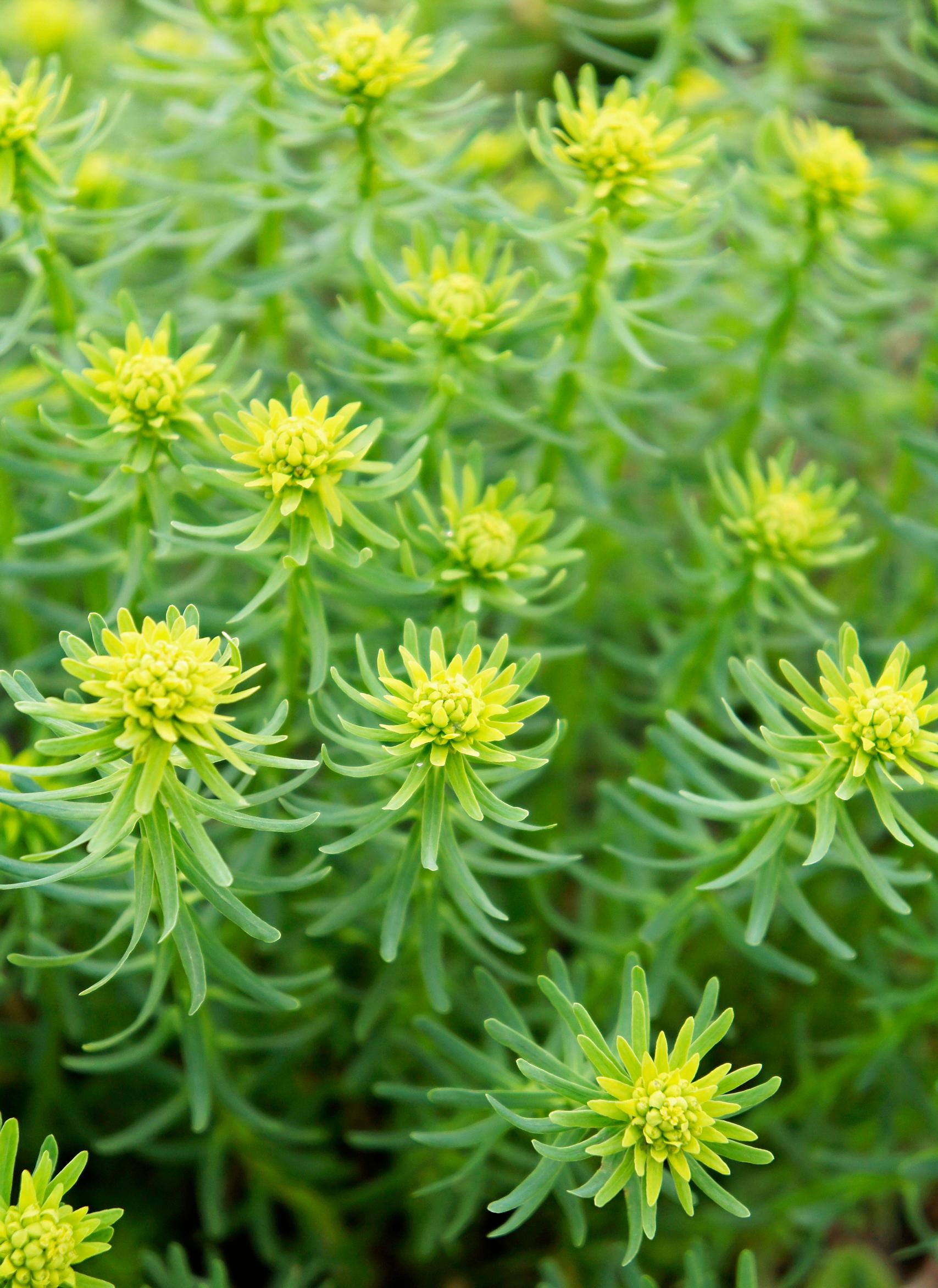
Cypress spurge is incredibly persistent. It tolerates drought and very poor soil. When cypress spurge blooms at our nursery, it always catches people’s eye. Anyone who sees it in pots comes closer to check it out. Its pale-green foliage and yellow flowers pair nicely with a dark-leafed shrub or perennial.
Euphorbia cyparissias thrives in sandy soil, much like a forest floor. When I say it spreads vigorously, people sometimes hesitate, but I recommend trying it. Cypress spurge is fantastic for solving difficult garden spots.
Light requirement: sun to partial shade
Height: 30 cm
Bloom time: May–June
5. Canada anemone

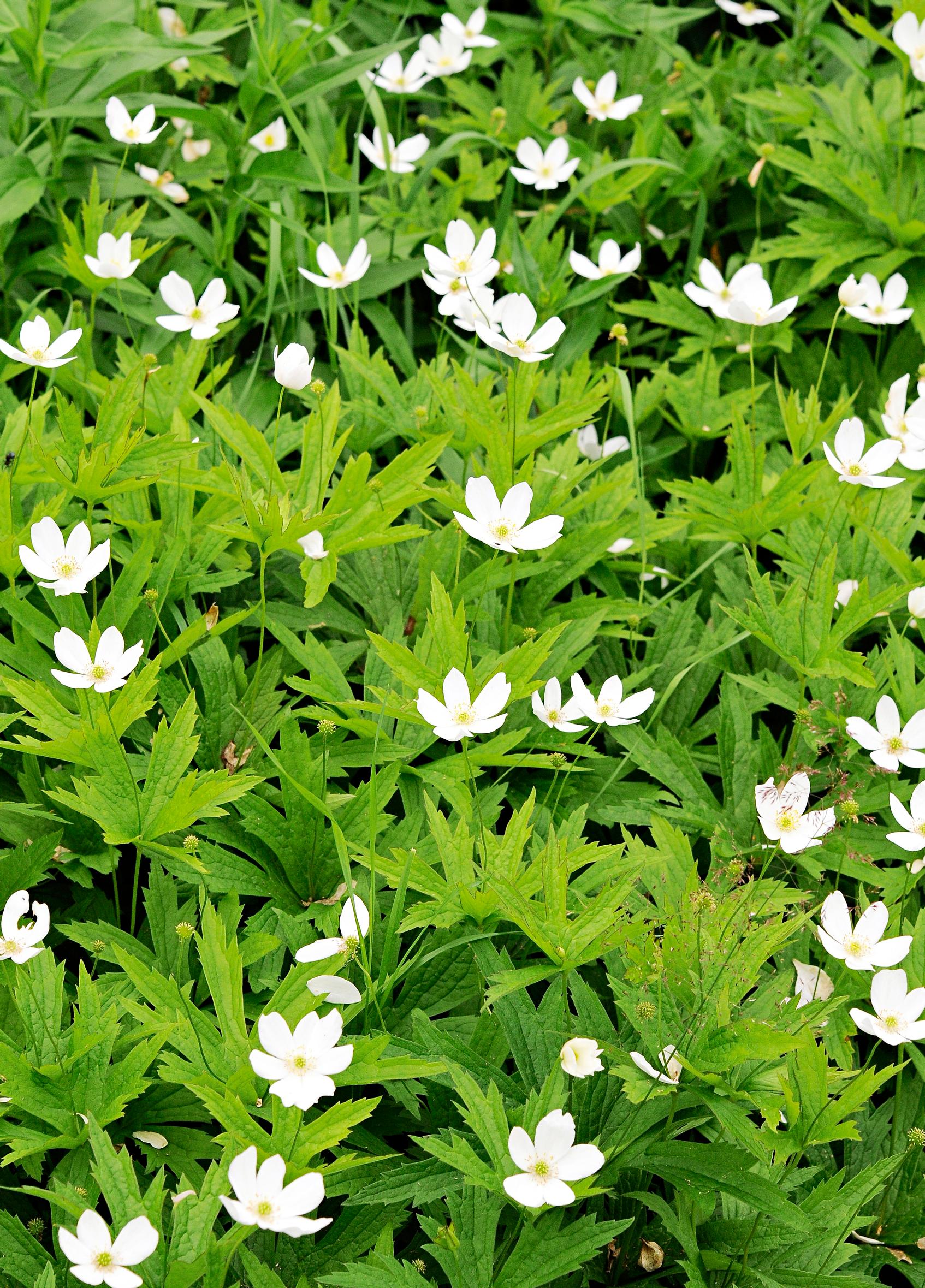
Set aside a dedicated spot for Canada anemone in your yard. It needs either a border or an area where it can spread freely. Don’t mix this vigorous grower up with snowdrop anemone, which blooms earlier. Once Canada anemone is established, it spreads vigorously. Anemonidium canadense works well under trees and shrubs, for example. Its height varies depending on how dry or fertile the soil is.
I like its blooming time. Anemones usually bloom early, but Canada anemone waits until midsummer. It also flowers for quite a while, brightening the yard for weeks. Canada anemone is an old perennial that fell out of favor for some time, but groundcover plants are back in style, so people are rediscovering it.
Light requirement: sun to shade
Height: 30–50 cm
Bloom time: June–July
6. Musk strawberry

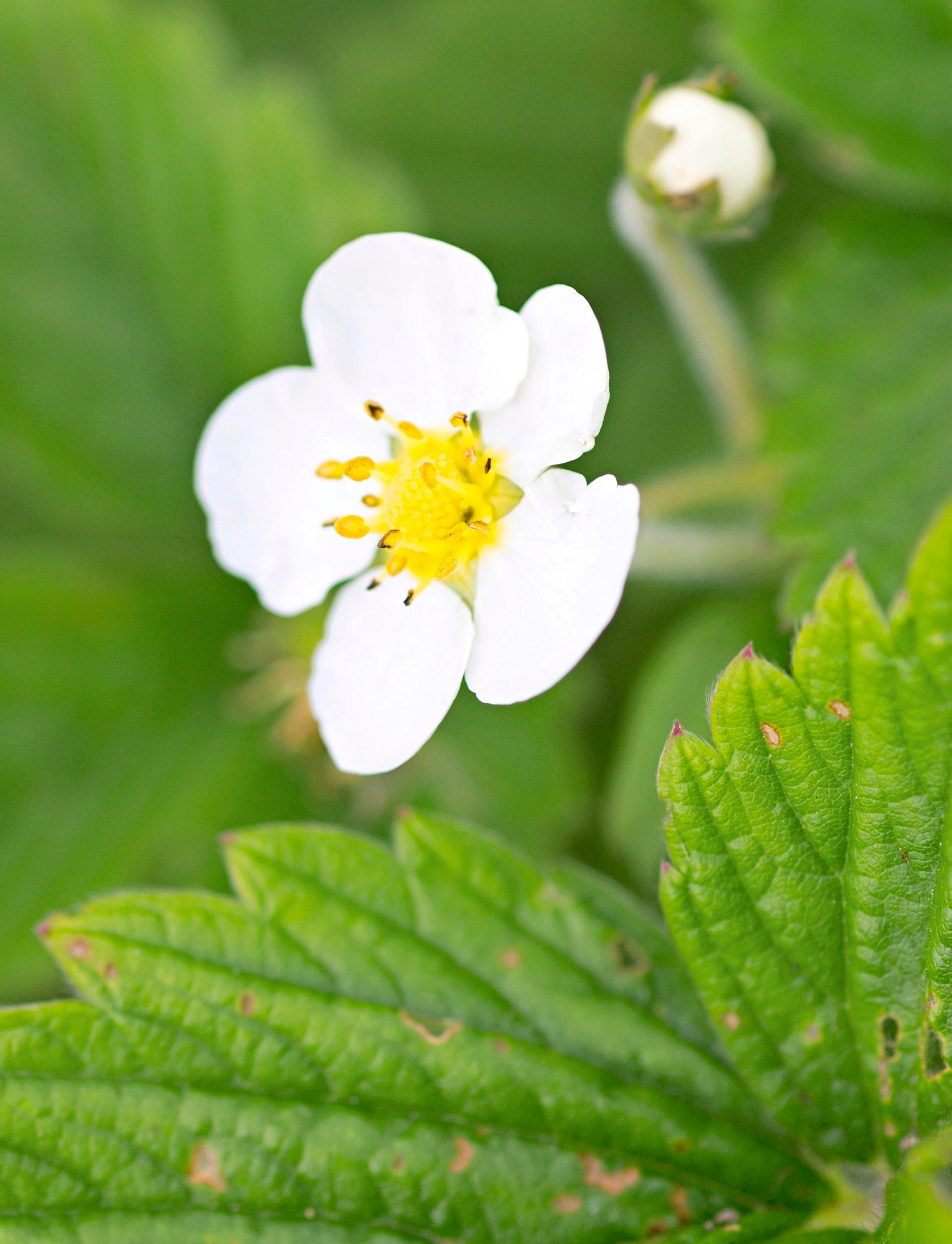
Musk strawberry once escaped into the wild from older gardens. Nowadays, Fragaria moschata is a great groundcover and understory plant. I’ve seen it thrive under Hungarian lilacs, for instance. It would likely look nice on top of a wall, too. Musk strawberry blooms for a long time and is bigger and sturdier than its wild relative. We first found it at our nursery years ago in the forest. Its popularity has grown over the past two or three years. You really only need to pull it back if it spreads too far.
Musk strawberry also suits a natural-style garden, just like my other favorites for dry, shady locations. It’s dioecious, so you need both male and female plants for berries. The berries themselves are paler than normal strawberries, with a mild strawberry flavor.
Light requirement: sun to partial shade
Height: 20 cm
Bloom time: June–August
Heidi Eriksson: “Give heartleaf bergenia a chance!”
Harjunpää nursery, Karijoki, zone III/IV


7. Bugleweed

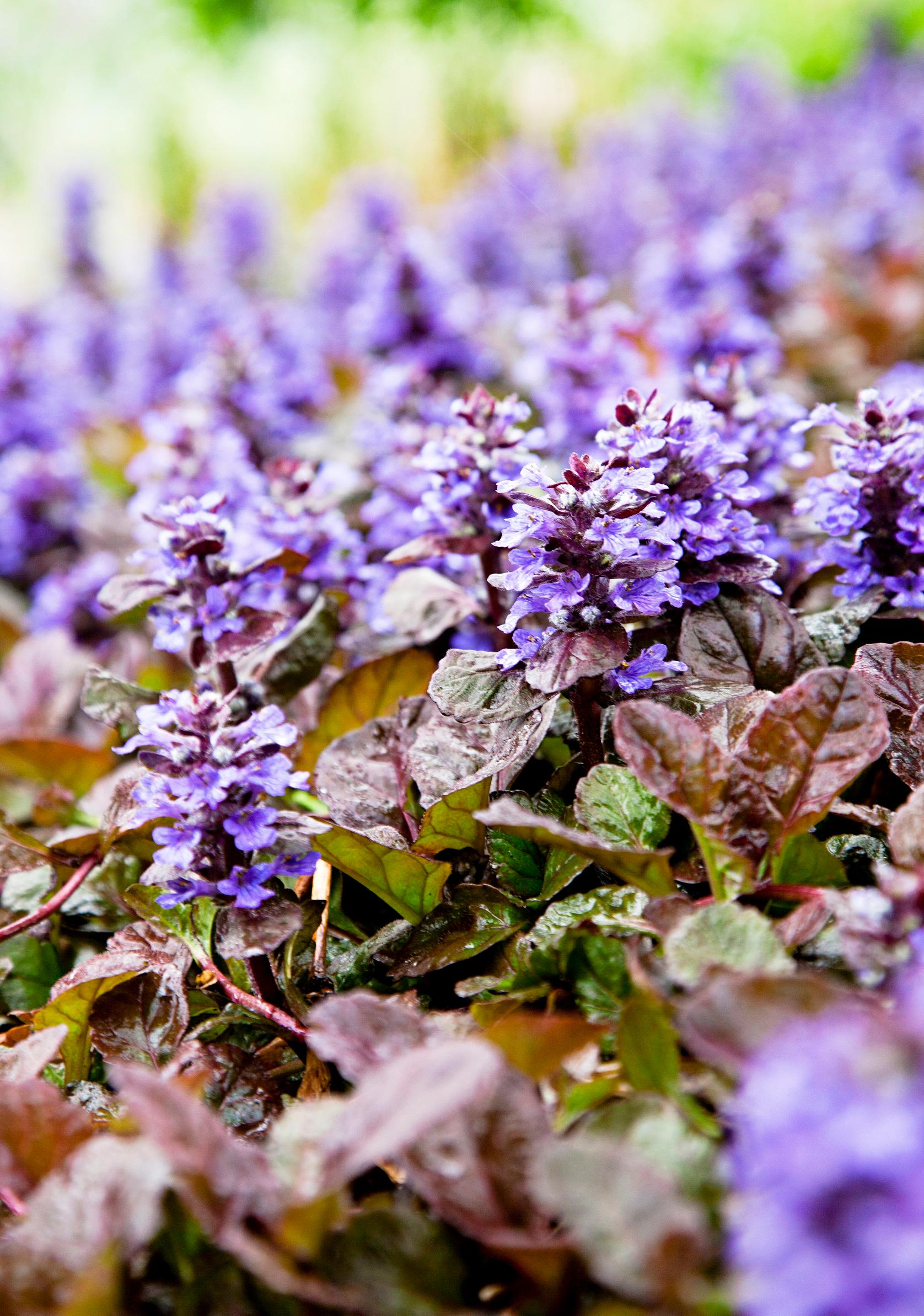
Bugle weed (Ajuga reptans) forms a dense mat even in places where other perennials don’t thrive—on my property, it blooms between a hedge and an apple tree, an area that’s very shady in summer. Bugleweed is handy because it can go under an apple tree or rhododendrons, and it fits perfectly in a woodland garden. It tolerates foot traffic extremely well. The only real issue is over-fertilizing, which reduces winter hardiness.
This perennial is great for groundcover or as an edging plant. Besides the classic green-leaf version, there are dark- and variegated-leaf types, and a variety with pink in its leaves. Cultivars also come in blue, purple, and white blooms.
Light requirement: sun to shade
Height: 15–25 cm
Bloom time: June–July
8. Creeping Jenny

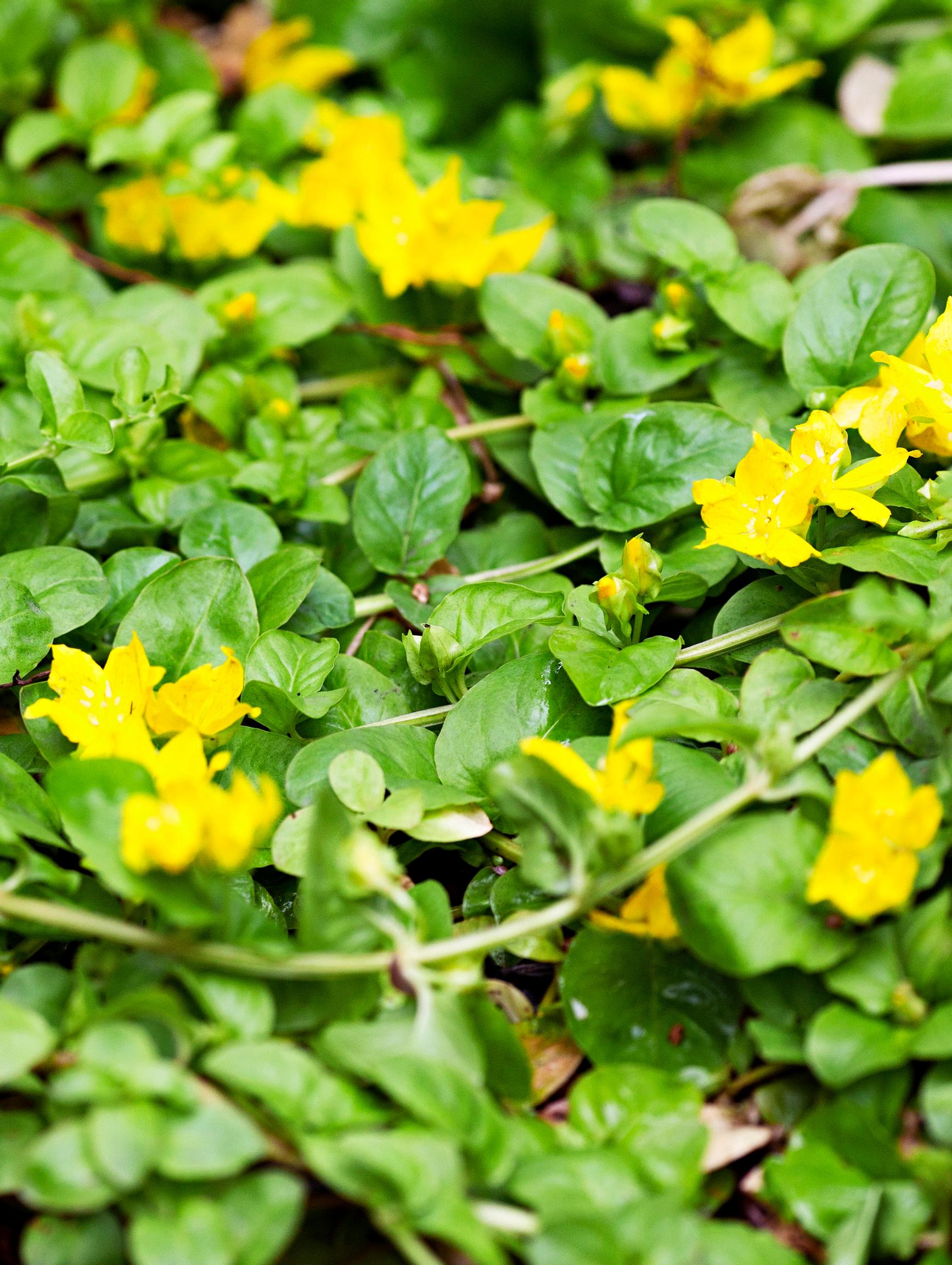
Many people wonder how to handle an open ditch on their property, since it often looks unappealing. Creeping Jenny is perfect for sprucing up a ditch because it tolerates both occasional moisture and drought. Lysimachia nummularia spreads easily over other plants, so it needs larger companions. In dry conditions, any overgrowth is easy to pull out because its roots stay near the surface. I’ve paired creeping Jenny with both leafy and coniferous shrubs—spirea is a nice option.
Creeping Jenny also flourishes in moderately fertile soil, so you don’t need to over-fertilize. It’s can even grow on rocks if there’s a bit of soil. You can even snip off segments to root in a pot, maybe alongside ornamental grasses.
Light requirement: sun to shade
Height: 5 cm
Bloom time: July–August (September)
9. Heartleaf bergenia

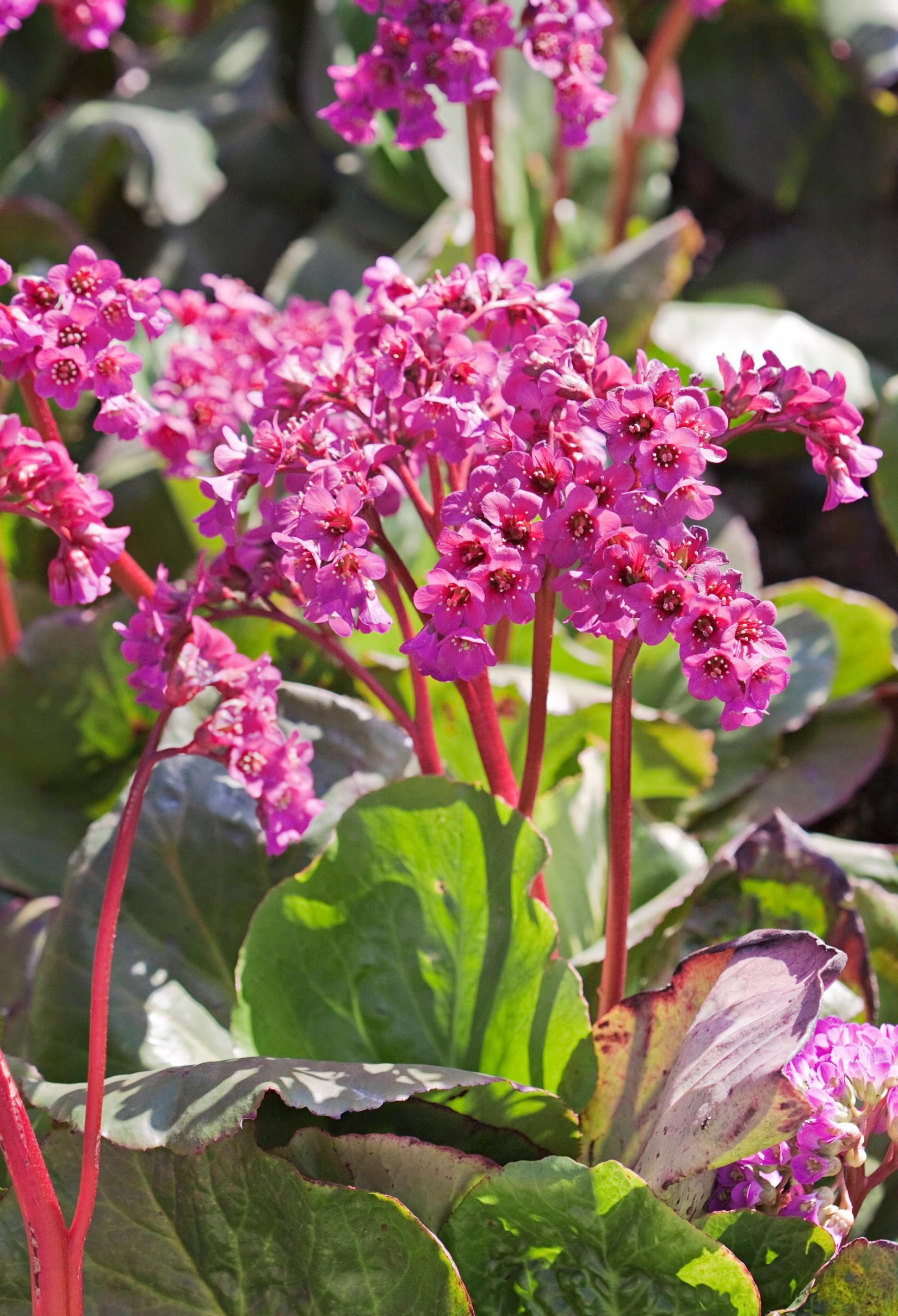
Heartleaf bergenia’s best feature is that it stays green through winter where few other plants do. In spring, it’s among the first to catch your eye. Bergenia cordifolia can be divisive: some people don’t like it, while others love it. But it’s worth a second look! I like using it to create rhythm, planting it in clusters all around. It pairs well with taller ornamental grasses, such as reed canary grass (Phalaris arundinacea).
You don’t need to weed or fertilize heartleaf bergenia. Add a little soil around the base every once in a while, and that’s about it. A perfect place is the top of a root cellar, which anchors the soil and provides shade. The blooms range from pink to deep red, and sometimes even white.
Light requirement: sun to shade
Height: 35–40 cm
Bloom time: May–June


